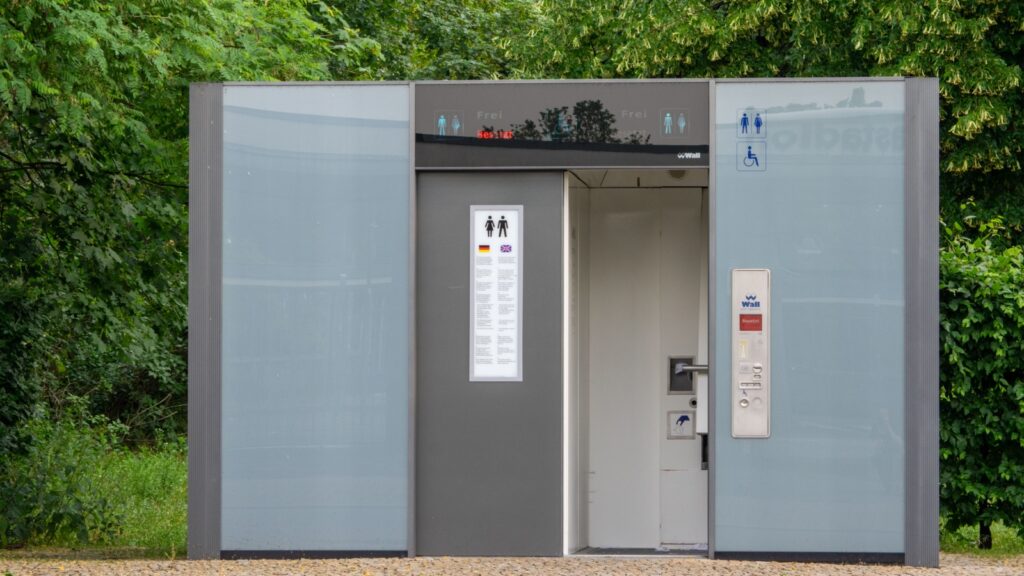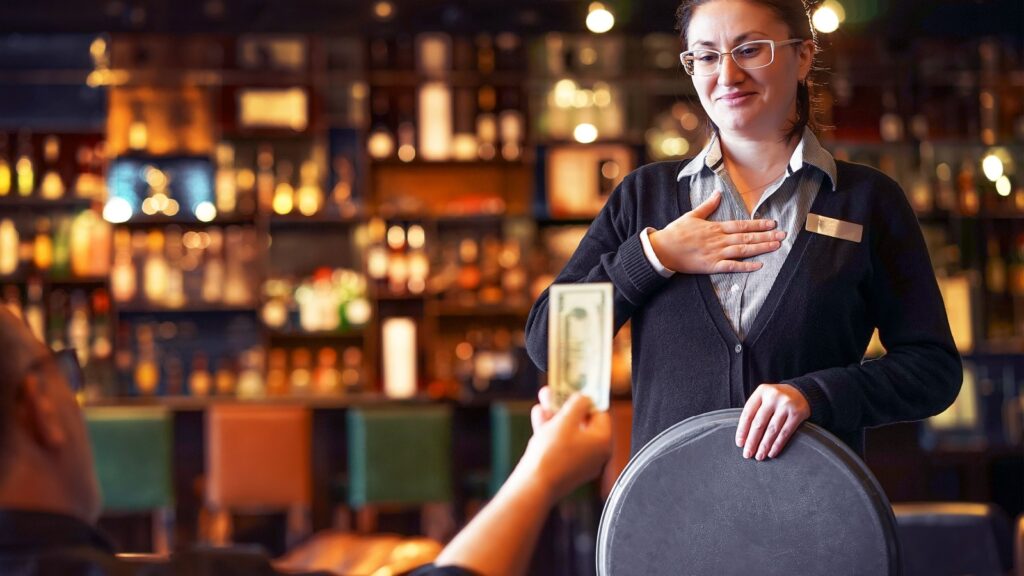When traveling abroad, the little cultural differences can be some of the most surprising—and entertaining—parts of the experience. Europe, with its rich history and unique customs, has a way of leaving American visitors scratching their heads over things that locals find completely normal. From dining etiquette to public conveniences, these everyday habits offer a fascinating glimpse into a different way of life. On an online platform, Americans shared what they find weird about Europeans.
1. Paying to Use Public Restrooms

In Europe, it’s common to encounter public restrooms that charge a small fee for access—typically ranging from €0.50 to €1. These fees are often used to cover cleaning and maintenance costs, ensuring the facilities are well-kept. Restrooms in train stations, shopping malls, and even some restaurants may have a turnstile or attendant collecting the fee. For Americans, this can be surprising because public restrooms in the U.S. are generally free, even in highly populated areas.
2. Unrefrigerated Eggs

In Europe, eggs are typically displayed and sold at room temperature, which can be shocking to Americans who are used to seeing eggs in the refrigerated section of grocery stores. This difference stems from how eggs are processed and handled.
In the U.S., eggs are washed and sanitized before being sold to prevent salmonella contamination. This process removes the eggs’ natural protective coating, known as the cuticle, which is why they must be refrigerated to stay fresh and safe. In Europe, eggs are not washed but are instead kept clean through farming practices. The cuticle is left intact, which acts as a natural barrier against bacteria, allowing eggs to be stored at room temperature.
3. No Tipping (or Low Tipping)

In many European countries, tipping is not a significant part of the culture because servers and hospitality staff are paid a livable wage. Service charges are often included in the bill, so tipping, if done at all, is more symbolic—typically just rounding up the bill or leaving a small amount (e.g., €1–€5). For Americans, who are used to tipping 15–20% or more as a standard practice, this can feel awkward or even rude, leading to confusion about what’s appropriate.
4. No Personal Space in Lines

One American stated that he had lived in Germany for 3 years. He finds that there is no personal space while standing in a line waiting. People of Europe (or at least Germany) do not consider personal space necessary when standing in a line. He added, “I’d be standing in line at a store and the next person behind me is breathing down my neck.”
5. August is Off in Europe

Many European people do not do work in the month of August. The streets, offices, and schools are on leave this month. Even doctors seem scarce in this period. This is because August is the summer vacation month in most parts of Europe. When any American visits Europe for the first time, they find it weird how few people are working.
6. Late-Night Dinners

Americans generally do not eat dinner late at night. The absolute latest hours for dinner for Americans are 8 to 9 pm. On the other hand, there is a culture of late-night dinners in Europe. They eat their last meal even from 12 pm to 2 am. This is really shocking for Americans when they encounter Europeans who have these habits.
7. Adaptation to the Environment

Americans are very hardworking and passionate in their fields and work. They can adapt to extreme environments such as heat, cold, humidity, and abrupt changes in weather. But the Europeans are totally different in this case. In many cases, Europeans often prefer to leave work in a harsh environment.
8. Bathroom Light Switches Are on the Outside

Commonly, the switches of bathrooms or toilets are outside of the room in Europe. No matter it is a public or private toilet, switches are not inside. The European logic for this is while entering a dark room. It is difficult to find the switch. Americans find the switch place and logic both weird because they have these light buttons inside the bathroom.
9. Smoking Culture

Smoking is very much common in Europe. Age and gender do not matter in this regard. In streets and malls, it seems every second person will be holding a cigarette in his hand. In America, the smoking rate is low. Thus, when Americans visit Europe, they find this smoking culture weird.
10. Nudity in Europe is Normal

One five-star spa and beauty salon owner in America claimed that when they attend European men and women, they are so comfortable getting naked, just like it is nothing. One commenter said this is because, “In most of Europe, nudity is not inherently sexualized (like it is in America).”
11. Leaving Babies Napping Outside

Some Americans commented how they found it strange that some Europeans (specifically in the Scandinavian countries) would leave their babies napping outside, alone, in chilly weather. Europeans explained that this was super common years ago. One said, “Doing the housework and baby needs fresh air? Put them outside in their pram. Going into a shop for a couple of things? Pram outside.” One man said his father worked in Bulgaria in the 80s, and it was common to see babies napping outside. “Housewives going into the stores, leaving a line of babies in the street where the sun shined and uncovering their faces so they’d get Vitamin D.”
12. “How are you doing?” is Not a Greeting in Europe

When you ask Europeans “How are you doing?” They think it’s a personal question instead of an American greeting. One American also said, “I work with a lot of European military, and they all say the same thing. “Why do you ask how I am, if you do not care??” Fair point!
13. Twin Beds in Hotels in Europe

When Americans visit Europe and have to stay at hotels, they find many things strange. For example, in hotels, single twin beds are joined side by side. They are joined to make king/ queen beds for a two-person room. Americans find it illogical that when there is a facility of king beds, then why join two?
14. Washing Machines In The Kitchen

In Europe, people are used to doing laundry in the kitchen. According to Europeans, the switches are present in the kitchen. That is why it is easy to use the washing machine there. For Americans, this is not normal.
Source: Reddit
12 Foods Europeans Eat Regularly That Are Really Weird to Americans

From unique meats and seafood to fruits you’ve never heard of, there is a whole world of cuisine available in Europe that you’d be hard-pressed to find in the United States. According to an online forum, this list of popular European foods are nearly impossible to find in America.
Read more: 12 Foods Europeans Eat Regularly That Are Really Weird to Americans
The 12 Most Annoying Misconceptions About the U.S. That Americans Say Foreigners Need to Drop ASAP

On an online platform, Americans share the most annoying misconceptions foreigners have about the U.S.
Read more: The 12 Most Annoying Misconceptions About the U.S. That Americans Say Foreigners Need to Drop ASAP
How to Spend 2 Days in Athens, Greece: An Easy Itinerary for First-Time Visitors

If you’ve ever dreamed of wandering through one of the world’s oldest cities, Athens, Greece is calling your name. This city is a treasure trove of history and culture, from the iconic Acropolis to the lively streets of Plaka. Athens has a little something for everyone.
Read more: How to Spend 2 Days in Athens, Greece: An Easy Itinerary for First-Time Visitors
Don’t Fall for the Hype: 10 Overrated Tourist Traps in Europe That Aren’t Worth Your Time

Europe is full of iconic landmarks and tourist destinations, attracting millions annually. However, not all of these destinations live up to their hype. This post will explore some of the biggest tourist traps in Europe according to travelers who have experienced them firsthand.
Read more: Don’t Fall for the Hype: 10 Overrated Tourist Traps in Europe That Aren’t Worth Your Time
12 Cities Outside the United States That Americans Love

Regarding favorite cities outside of the US, everyone has their own preferences. Recently on an online platform, Americans shared their favorite cities worldwide.
Read more: 12 Cities Outside the United States That Americans Love





